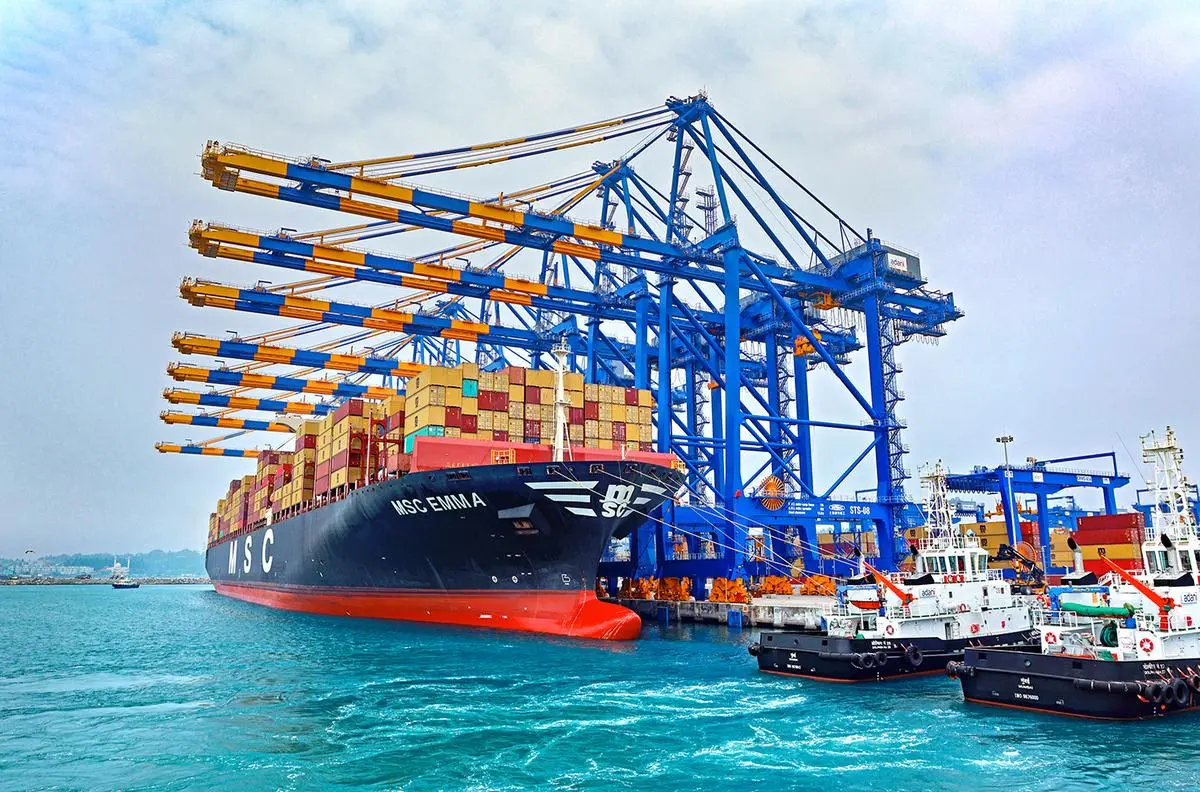In an effort to establish India as a major shipping hub, Prime Minister Narendra Modi inaugurated the country’s first deepwater transhipment port in Vizhinjam in Kerala on Friday. From its conception in 1991 to its current operating position in 2025, the Vizhinjam International Deepwater Seaport in Kerala has overcome many obstacles, including financial, logistical, environmental, and legal ones.
The Adani Group operates the port, which was constructed at a cost of ₹8,900 crore under a public-private partnership. The Kerala government owns the majority of the port. Now that it is up and running, it has the potential to completely transform the nation’s shipping sector and save $220 million a year.
Specialities about Vizhinjam port
The first deepwater container transshipment port in India is Vizhinjam. Here, cargo containers are moved between vessels before arriving at their destination. The seaport has a deep draft of around 20 meters by nature. It is the only transshipment centre in the Indian subcontinent and is situated near international shipping lanes.
The Adani Group created and runs the port, which was constructed as part of a public-private partnership (PPP). The Kerala government owns 61.5% of the port, while the Centre owns 9.6%. The opening of Kerala’s Vizhinjam Port is important for India’s maritime industry. For many years, people have been anticipating this port. It will increase business and trade and be especially good for Kerala’s economy.
According to Fortune India, Adani Vizhinjam Port Private Limited (AVPPL) has built an 800-meter container berthing facility and a 3,000-meter breakwater in the first phase.
The port can currently accommodate one million (10 lakh) containers annually with its 30 slots. The seaport project’s four phases should be finished by 2028–2029. In that point its container handling capacity will increase to 6.2 million (62 lakh) TEUs.
Compared to other ports like Colombo and India’s Mundra port, the Vizhinjam port has a significant advantage. It is only 10 nautical miles from the east-west global shipping lane. The port in Kerala started a trial run last July, and on December 3, 2024, commercial operations started.

How can India save millions of dollars thanks to the Vizhinjam International Deepwater Seaport?
Since India lacks a deepwater transhipment port, 75% of its transhipment cargo passes through international ports like Singapore, Jebel Ali in the United Arab Emirates, and Colombo in Sri Lanka. Domestic traders incur an extra $80 to $100 per container as a result of the higher transport durations and delays.
Serving its own cargo might bring in an extra $220 million annually for India. Having the ability to manage transhipment cargo will protect India’s supply networks against any geopolitical shocks, in addition to the financial ones.
India can service large cargo vessels with a capacity of up to 20,000 containers thanks to the port’s proximity to international shipping routes. Additionally, the location is ideal because there is less sand movement along the coast, which lowers maintenance expenses.
Why was the port of Vizhinjam necessary?
Up until recently, India lacked a deepwater port for the transshipment of containers. Nearly 75% of the South Asian nation’s marine traffic is transshipped through foreign ports like Singapore, Jebel Ali in the United Arab Emirates (UAE), Salalah (Oman), and Colombo in Sri Lanka. There aren’t enough of these ports to accommodate huge boats.
Reliance on foreign transshipment ports can lengthen transit times and is expensive. According to the Indian Express, domestic traders pay an extra $80 (Rs 6,720) to $100 (Rs 8,401) each container. An estimated $200–220 million (Rs 1,682-1,850 crore) is spent on transhipment in India each year.







Be First to Comment